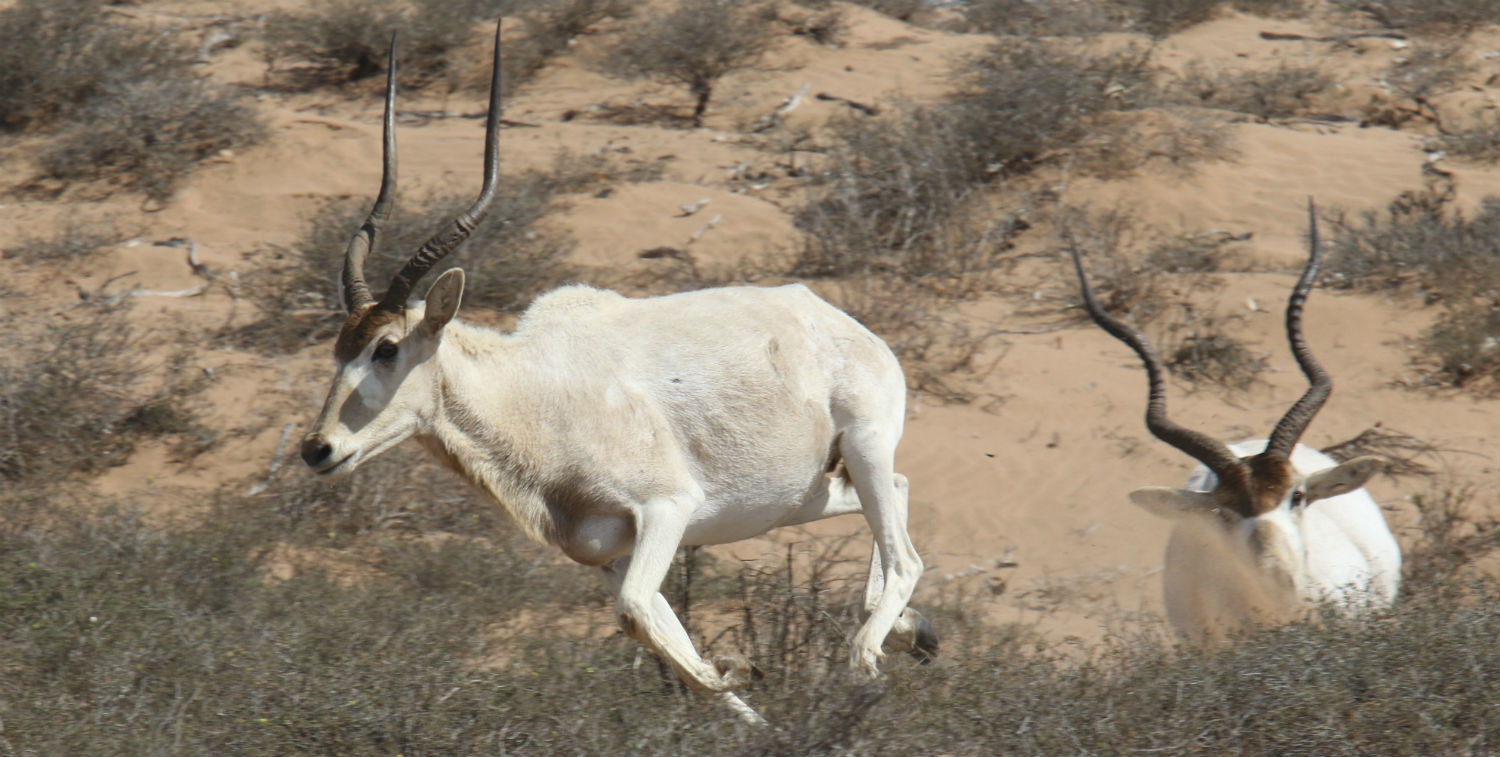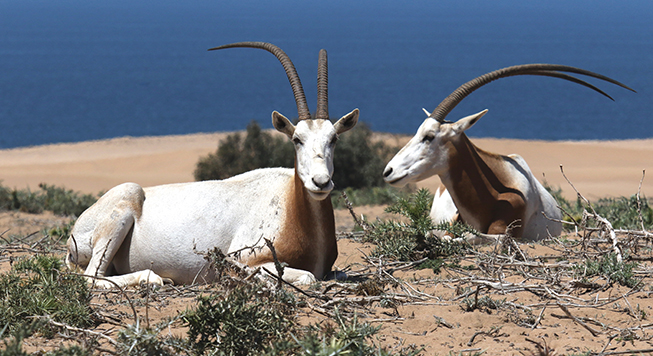Main menu
CEPF is a joint initiative of l’Agence Française de Développement, Conservation International, the European Union, Fondation Hans Wilsdorf, the Global Environment Facility, the Government of Canada, the Government of Japan and the World Bank. A fundamental goal is to ensure civil society is engaged in biodiversity conservation.
Visitez le site français コア情報の日本語翻訳を読むOr use Google Translate to translate the English site to your language:
GTranslate
The Fate of the Addax in the Wild and Its Future Between Fences
16 May 2016
16 May 2016
Thirty years ago, the addax (Addax nasomaculatus) was assessed by IUCN in its Red List as Endangered.
Twenty years ago, its status moved to Critically Endangered.
Six days ago, IUCN announced that this charismatic species of ungulate that once roamed free in the Sahelo-Saharan region may become Extinct in the Wild.
A recent survey carried out by staff of Sahara Conservation Fund and Noé found only three individuals surviving in the wild in Niger. It would be very sad to see the addax follow the path of the Oryx dammah (Oryx dammah) that, according to the IUCN, became Extinct in the Wild in 2000.
It is my hope that efforts by NGOs such as Noé and Sahara Conservation Fund — along with communities, private sector operators and governments in countries where the addax still lives — will lead to an effective conservation of this species in the desert of North Africa.
In early April I had the pleasure of visiting — along with Pierre Carret, CEPF grant director for the Mediterranean biodiversity hotspot and Awatef Abiadh representing the Regional Implementation Team (BirdLife – Ligue de Protection des Oiseaux [LPO]) — five of the 12 projects funded by CEPF in Morocco.
In the region of Agadir in south-western Morocco, CEPF has been funding GREPOM (Groupe de Recherche pour la Protection des Oiseaux du Maroc), which is working closely with the Haut Commisariat aux Eaux et Forêts for the conservation of biodiversity of the Souss-Massa National Park. This park, covering 33,800 ha between Agadir and Tiznit, was created in 1991 to conserve the unique fauna and flora of this sub-desert region, which benefits from the water brought by two temporary rivers, Wadi Souss in the north and Wadi Massa in the south.
In the northernmost part of Sous-Massa National Park, the director of the park, Dr. Mohamed El Bekkay, described the efforts dedicated to conserve species like the northern bald ibis (Geronticus eremita) whose breeding range is now restricted to just two countries in the Mediterranean region, Syria and Morocco. These conservation efforts are paying off and the population of this Critically Endangered species in Morocco is increasing: In 2014, 115 pairs produced 192 fledged young according to BirdLife. We were fortunate to observe a very active colony, protected by two wardens from GREPOM, with the President of GREPOM Mohamed Dakki and its Managing Director Mourad Soudi.
The park authorities have also decided to support the re-introduction of species that were once distributed in the southern part of Morocco with the long-term objective of repopulating some protected areas of the Sahara. In 2008, the release of addax began in the fenced reserve of Safia and of Oryx dammah in the fenced reserve of Msissi, both included in the limits of the Souss-Massa National Park. I had the privilege to see these two species in fenced reserves of semi-desert habitats. These two magnificent ungulate species are doing well, and the size of the herds is increasing.The success of this semi-captive operation is encouraging and will hopefully lead to the release of herds of addax in a totally wild environment at some point. However, the conservation community should dedicate all possible efforts to save those few individuals still surviving in Niger (and perhaps also in Mauritania where tracks of 15 addax were found not too long ago).
Re-introductions are certainly laudable conservation efforts, and I want to pay tribute here to what the Moroccan authorities are doing to conserve and restore the unique biodiversity of their country, but ex-situ conservation actions should complement in situ conservation initiatives. Identifying suitable habitat in large natural areas where addax are still surviving is a key priority.
I hope that, collectively, the conservation community will be able to save these last animals that still survive in the dunes of Niger and Mauritania and, at the same time, secure new areas for conservation in the Sahelo-Saharan region where released populations of addax will be able to thrive.








